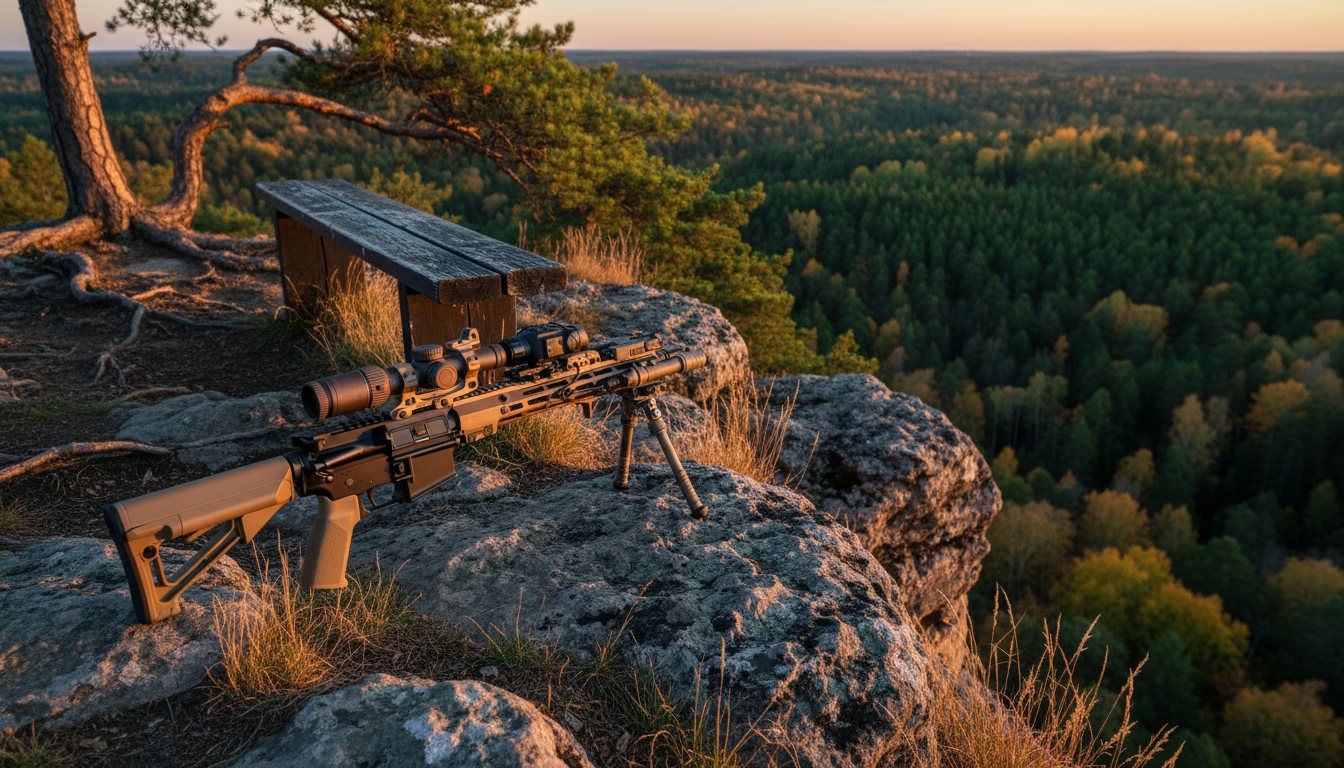Night Vision vs. Thermal Imaging: Which Wins for Hunting in 2025?
Choosing between night vision and thermal imaging for hunting? With 1,500 monthly searches for "night vision vs thermal," this guide breaks down the pros, cons, and best use cases to help you decide, featuring top devices for 2025 hunts. Thermal scopes excel in detection through weather, while night vision offers detailed imagery at a lower cost—key as the night vision market hits $8.57 billion in 2025, driven by hunting applications.
Night Vision vs. Thermal: The Breakdown
|
Feature |
Night Vision |
Thermal Imaging |
|
Tech |
Amplifies available light (Gen 1-3 or digital) |
Detects heat signatures |
|
Best For |
Low-light, clear conditions; detailed target ID |
Fog, smoke, total darkness; quick detection |
|
Range |
100-300 yds (e.g., ATN X-Sight 4K Pro) |
500-1,000+ yds (e.g., Pulsar Thermion 2) |
|
Price |
$500-$5,000 (affordable options like Sightmark Wraith 4K) |
$1,500-$10,000 (budget like DNT Hydra C-200) |
|
Hunting Use |
Close-quarters, precise shots |
Spotting game in heavy cover |
Sources: Dive Bomb Industries (Sep 2025), ScopesField (Jun 2025), FLIR (Sep 2025)
When to Choose Night Vision
- Pros: Affordable, natural-looking images, lightweight (0.5-1.5 lbs), better for target identification in ambient light.
- Cons: Requires some light; struggles in zero-light or fog.
- Best Models: ATN X-Sight 4K Pro ($599, digital with recoil video); Sightmark Wraith 4K ($499, 4K sensor for clear hunts). Shop ATN X-Sight 4K Pro
- Ideal for: Close-range hog or deer hunting where detail matters When to Choose Thermal
- Pros: Sees through weather/obstacles, detects living targets by heat (no light needed).
- Cons: Higher cost, less detailed images (monochrome), bulkier.
- Best Models: Pulsar Digex C50 ($749, digital clip-on with WiFi); DNT Hydra C-200 ($1,299, compact thermal). Shop DNT Hydra C-200
- Ideal for: Long-range spotting in dense fog or brush, like hog hunting at night Hunting Applications in 2025
- Night Vision: Great for urban or wooded hunts with some moonlight; use for precise shots (e.g., ATN for airgun hunting
- Thermal: Superior for hog/feral animal detection in adverse conditions; Pulsar Thermion 2 noted for 2025 hog scopes
- Hybrid Approach: Pair both for versatility (e.g., thermal spotter + NV scope); recommended for serious hunters. Shop Hybrid Kits
Pro Tip: Test in real conditions—book a virtual demo: Schedule Here.
Setup Guide
- Night Vision: Mount on rifle (Picatinny rail); zero at 50 yds; use IR illuminator in zero-light.
- Thermal: Calibrate for heat signatures; pair with apps for recording (e.g., Pulsar Digex WiFi).
- Maintenance: Clean lenses; store in dry cases (Shop Cases).

Key Takeaways
- Night vision suits budget hunters needing detail; thermal wins for detection in tough conditions.
- Top picks: ATN X-Sight for NV, Pulsar Digex for thermal.
- Choose based on hunt type—hybrid for best results in 2025.
FAQ
- Which is better for hog hunting? Thermal for detection, NV for ID—thermal often wins in fog/smoke
- Affordable options under $1,000? Yes, Sightmark Wraith 4K (NV) or Pulsar Digex C50 (thermal clip-on
- Can thermal work in rain? Yes, detects heat through weather
- Where to buy? Explore at US Night Vision.
Gear up for hunts: Shop Now.
Recent Posts
-
Beginner's Guide to Understanding Night Vision Generations in 2025
New to night vision? With 800 monthly searches for "night vision generations explained" and a growin …24th Oct 2025 -
Night Vision vs. Thermal Imaging: Which Wins for Hunting in 2025?
Choosing between night vision and thermal imaging for hunting? With 1,500 monthly searches for "nigh …23rd Oct 2025 -
Affordable Digital Night Vision: Exploring DNT Optics' NVMD-C200 Multi-Purpose Device
Digital night vision is democratizing low-light performance, with 1,500+ monthly searches for "affor …22nd Oct 2025




